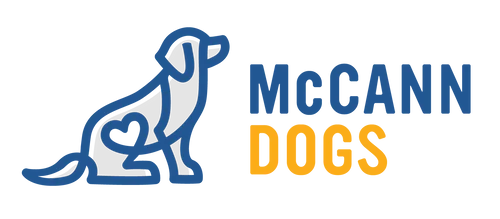Sadly, we hear this all of the time. "He knows what he did - Look at his face!"
Picture this situation: A dog named Doug is left...
unsupervised before he's really ready. Due to boredom and an unclear understanding of the rules, he makes a mistake and chews a piece of furniture. His owner, Sally walks into the room and sees the destruction. Immediately, she reacts with agitation. Now, keeping in mind that dogs are masters of body language, Doug reacts to the owner's anger by pinning his ears back, averting his gaze, tucking his tail and slinking out of the room. This look of guilt is compounded every time this situation occurs. Doug learns to be more adept at reading Sally's body language and starts to react quicker when she displays anger. It's a cycle that unbeknownst to Doug, fuels the fire that makes him look like he understands the error of his ways.
Do you think Doug is guilty? Keep reading....
It's a normal human reaction for us to see guilt when the dog's expression seems to convey it. The fact of the matter however, is that 100% of the time, this is an inaccurate assessment. Dogs don't feel guilt - guilt is a human emotion. Dogs don't feel human emotions anymore naturally than we feel dog emotions. When was the last time you greeted a new friend by sniffing their rear? When was the last time you joyfully rolled in something stinky? We are different species with fundamental variations in behaviour, desire and emotion. Reading guilt in a dog's reaction or expression is a human error. It's typical for humans to anthropomorphize, or to assign human tendencies to non-humans. Unfortunately, this leads to a breakdown in communication between species and training problems ensue.
In order to properly solve your training problems, your dog must have a clear understanding of the rules. The trouble with assuming that Doug is guilty is that it presumes the he will then learn from his guilt. This couldn't be further from the truth and when Doug doesn't learn, Sally will go to another human condition - she'll assume Doug is stubborn. He's now been labelled with two human titles and the biggest problem present in this is that Doug is a DOG!
The situation presented with Doug clearly illustrates that there are some holes in Sally's understanding of how Doug thinks. Sally assumes that Doug is ready to be unsupervised when he's not. She assumes that he somehow understands that chewing his bone is right while chewing furniture is wrong. It's completely unfair for Doug to be expected to make his own choices in a human world without the proper guidance and history to back it up.
What Do Your Think Doug Needs?
Good management is a crucial part of raising a puppy. Proper supervision is a must and the dog having a safe spot when they can't be supervise is equally important. Crates are the #1 tool for properly containing a puppy for their safety as well as training. Until you are confident that they understand the rules of the house, they should always be managed by being in a safe spot or under the watchful eye of a capable adult. That way at the first sign of trouble, you can stop them and redirect to an appropriate behaviour. Once they understand what is expected of them, you can start to leave them unsupervised for short periods of time. If they are successful, you can continue to trust that they understand the rules of the house. If they make a mistake, don't blame the dog! Adjust your training and management efforts to make sure they don't repeat the error. Remember - the rules in a dog's world are very different and since we are asking them to join ours, we need to be fair and give them the opportunity to learn without expecting that they already know.
Please remember, dogs are dogs - they are not humans. They will have different responses to situations and they will react as a dog would when faced with human reactions and emotions. Don't let this confuse you and don't let the dog be labelled as a human would be. Be fair and help the dog gain success. After all, we're asking them to join our world - let's be worthy of that privilege.
Happy Training!

